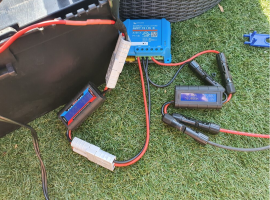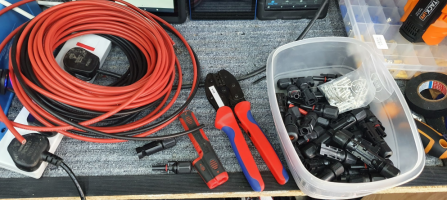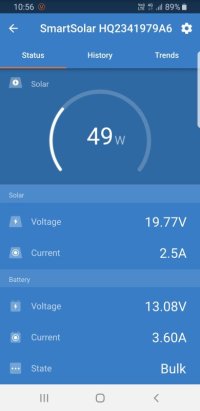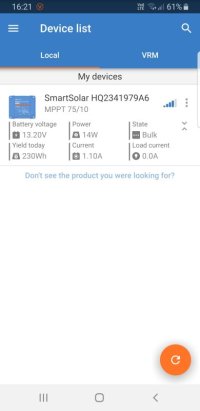OK - further logic check please. I need an PV extension lead so I can position the panel away from the van and I've been looking at 10m ones on Amazon. I've also pondered making up my own to save a bit of cash (not that much admittedly) so I could do with a bit of clarification on the following:
- At 10m, I'm assuming I would need 6mm PV cable to cope with potential voltage drop? (Renogy 200w panel - 5.45a open circuit current)
- I have a load of Anderson connectors, so could I use these to connect the extension cable to the MPPT instead of MC4? This connection is inside the van so does not necessarily need to be waterproof?
- Do I need a fuse on the positive cable? The Amazon ones don't seem to have them (and they are not shown on @Dellmassive wiring diagrams). If so, would the fuse go nearer the panel, or the controller?
- If so, are the MC4 inline fuses like this one the best/easiest?
- I know they are cheap, but to what extent do you NEED the MC4 spanners?
-
fuses are not needed on 12v solar systems IMHO as the short circuit current is so low versus the cable gauge used (next to no chance of burning out cables) - so leave it out. ( if you wanted to fit one, it would go as close as possible to the source of power - so at the panel end of the cable)
- a 10m extension cable is fine,
6mm is better than 4mm for power transfer, but 4mm will also suffice. . . . cable physical size is also larger etc etc .. ( i use 4mm for my 10m extension runs)
- MC4 VS Anderson -
you can use whatever you want provide the connector has sufficient ratings. so you you can do that.
However, im a firm believer in using the correct connector for the job, and for solar thats MC4.
personally i keep
MC4 for all solar panels, extension leads, interconnectors etc etc ,
and use Anderson
SB50 connectors to the Power side of things. .
that way its impossible to connect any thing up wrong as everything is keyed correctly, so solar will only connect to a solar input and SB50 will only connect to the Power side.
so all my solar pv side stuff is MC4, that way any controller will connect to any extension cable that will connect to pv panel.
and same on the power side, i make up fused SB50 connection on the battery, then any SB50 extension cable can be used to any solar controller. etc et c
- MC4 tool - yes and no, for the spanner bit, you could prob do the connection tight enough by hand - but once clicked together, some of the MC4 connections are next to impossible to undo without the two prongs bit of the tool . . . especially when its cold out.
there are loads of MC4 plugs that all vary slightly, same with the tools . . they are all slightly different. so id suggest getting a MC4 tool to make like easier.
+++
i make up all my solar controllers so that they are plug and play using MC4 and SB50 with flexible 8AWG silicone cable


you can see here about the making solar cables. . .
[Guide] Solar Cables? . . . - How I Did It - its time for another guide . . . This time on solar cables. we use these cables for permanent install and for mobile installs. lets start with the Solar PV MC4-MC4 cable. Solar PV cable is not actually standard cable . . . its more specialised...

www.t6forum.com

and MC4 leads. . .

.
Mc4 tools. .

.
















